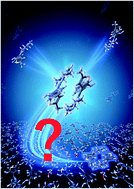Precrystallization solute assemblies and crystal symmetry
Abstract
Solution crystallization is a part of the synthesis of materials ranging from geological and biological minerals to pharmaceuticals, fine chemicals, and advanced electronic components. Attempts to predict the structure, growth rates and properties of emerging crystals have been frustrated, in part, by the poor understanding of the correlations between the oligomeric state of the solute, the growth unit, and the crystal symmetry. To explore how a solute monomer or oligomer is selected as the unit that incorporates into kinks and how crystal symmetry impacts this selection, we combine scanning probe microscopy, optical spectroscopy, and all-atom molecular simulations using as examples two organic materials, olanzapine (OZPN) and etioporphyrin I (EtpI). The dominance of dimeric structures in OZPN crystals has spurred speculation that the dimers preform in the solution, where they capture the majority of the solute, and then assemble into crystals. By contrast, EtpI in crystals aligns in parallel stacks of flat EtpI monomers unrelated by point symmetry. Raman and absorption spectroscopies show that solute monomers are the majority solute species in solutions of both compounds. Surprisingly, the kinetics of incorporation of OZPN into kinks is bimolecular, indicating that the growth unit is a solute dimer, a minority solution component. The disconnection between the dominant solute species, the growth unit, and the crystal symmetry is even stronger with EtpI, for which the (010) face grows by incorporating monomers, whereas the growth unit of the (001) face is a dimer. Collectively, the crystallization kinetics results with OZPN and EtpI establish that the structures of the dominant solute species and of the incorporating solute complex do not correlate with the symmetry of the crystal lattice. In a broader context, these findings illuminate the immense complexity of crystallization scenarios that need to be explored on the road to the understanding and control of crystallization.

- This article is part of the themed collection: Understanding Crystallisation


 Please wait while we load your content...
Please wait while we load your content...